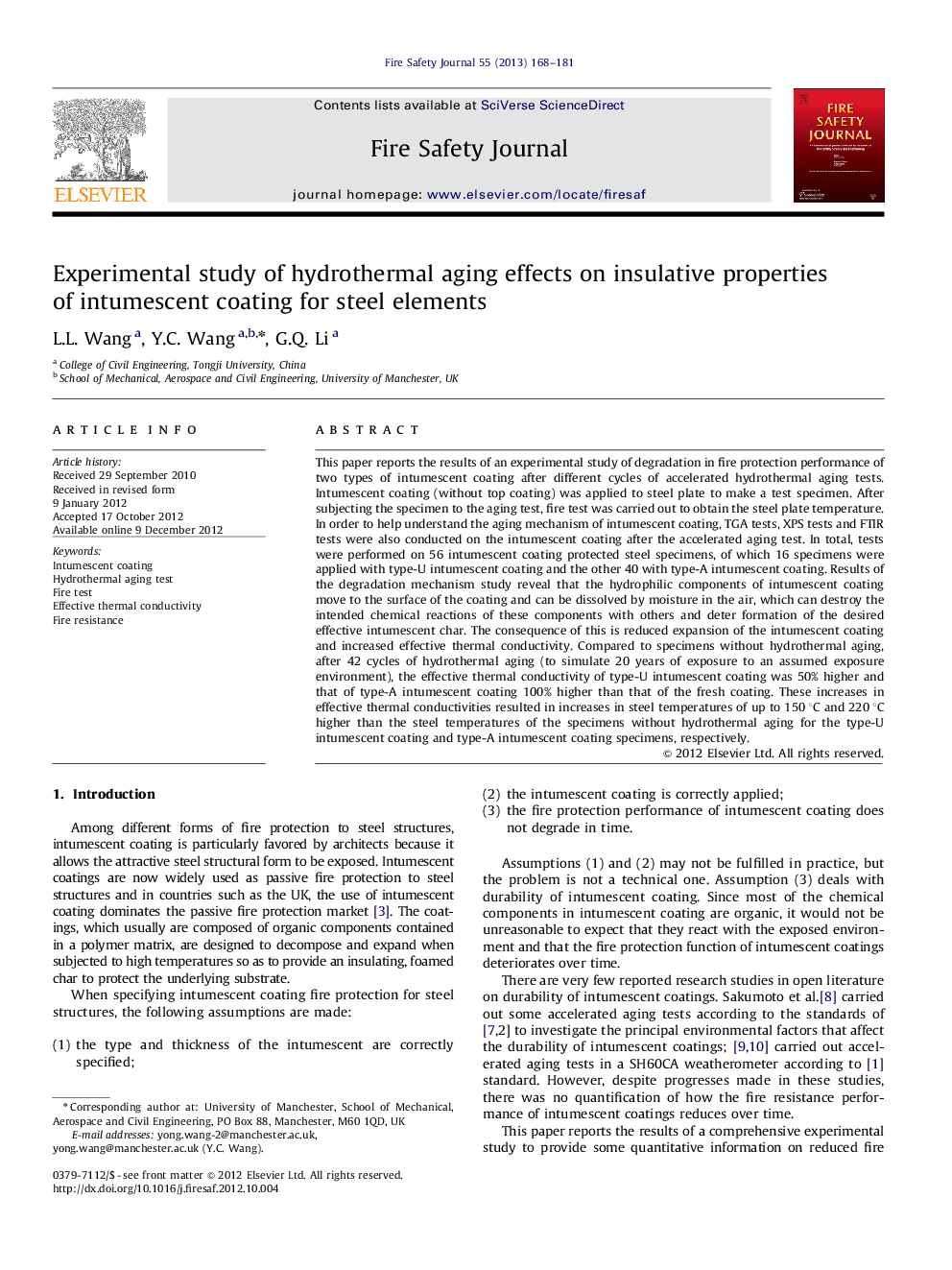| Article ID | Journal | Published Year | Pages | File Type |
|---|---|---|---|---|
| 270092 | Fire Safety Journal | 2013 | 14 Pages |
This paper reports the results of an experimental study of degradation in fire protection performance of two types of intumescent coating after different cycles of accelerated hydrothermal aging tests. Intumescent coating (without top coating) was applied to steel plate to make a test specimen. After subjecting the specimen to the aging test, fire test was carried out to obtain the steel plate temperature. In order to help understand the aging mechanism of intumescent coating, TGA tests, XPS tests and FTIR tests were also conducted on the intumescent coating after the accelerated aging test. In total, tests were performed on 56 intumescent coating protected steel specimens, of which 16 specimens were applied with type-U intumescent coating and the other 40 with type-A intumescent coating. Results of the degradation mechanism study reveal that the hydrophilic components of intumescent coating move to the surface of the coating and can be dissolved by moisture in the air, which can destroy the intended chemical reactions of these components with others and deter formation of the desired effective intumescent char. The consequence of this is reduced expansion of the intumescent coating and increased effective thermal conductivity. Compared to specimens without hydrothermal aging, after 42 cycles of hydrothermal aging (to simulate 20 years of exposure to an assumed exposure environment), the effective thermal conductivity of type-U intumescent coating was 50% higher and that of type-A intumescent coating 100% higher than that of the fresh coating. These increases in effective thermal conductivities resulted in increases in steel temperatures of up to 150 °C and 220 °C higher than the steel temperatures of the specimens without hydrothermal aging for the type-U intumescent coating and type-A intumescent coating specimens, respectively.
► Aging tests on intumescent coatings. ► Quantification of aging on fire protection performance (thermal conductivity, steel temperature) of intumescent coatings. ► Mechanisms of aging of intumescent coatings.
